Posted on March 6th, 2019 by Mary Lord
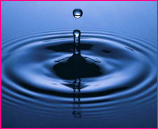 Civil, chemical, and environmental engineers work together to develop new water treatment systems or to improve existing ones. In this activity, teams of students in grades 3-5 investigate different methods for removing pollutants from water, then design and build their own water filters from plastic bottles.
Civil, chemical, and environmental engineers work together to develop new water treatment systems or to improve existing ones. In this activity, teams of students in grades 3-5 investigate different methods for removing pollutants from water, then design and build their own water filters from plastic bottles.
Read More
Filed under: Class Activities, Grades K-5, Grades K-5, Grades K-5, Lesson Plans | 2 Comments »
Tags: Class Activities, drinking water, Environmental Engineering, Grades K-5, Lesson Plan, Pollution, teachengineering, water filter
Posted on February 23rd, 2019 by Mary Lord
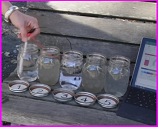 Middle school students explore how fertilizers and other solids affect water quality by building and using sensors to measure the electrical conductivity of water samples. They then create data tables and investigate possible sources of pollutants using digital visualization tools.
Middle school students explore how fertilizers and other solids affect water quality by building and using sensors to measure the electrical conductivity of water samples. They then create data tables and investigate possible sources of pollutants using digital visualization tools.
Read More
Filed under: Class Activities, Grades 6-8, Grades 9-12, K-12 Outreach Programs, Lesson Plans | Comments Off on Measuring Water Quality to Assess Human Impact
Tags: arduino, Class Activities, data analysis, electrical circuits, Electrical Engineering, Environmental Engineering, Excel, Grades 6-8, HackingSTEM Microsoft, hydrology, Lesson Plan, Pollution, sensors, water quality
Posted on February 20th, 2019 by Mary Lord
 The work of engineers is all around us, but many students don’t know about the exciting careers they could pursue by studying engineering. That’s particularly true for girls and students of color. Discovering You: Engineering Your World, a new STEM education initiative by NBC News Learn in partnership with ASEE, Chevron, and the National Science Foundation, aims to inspire the next generation of engineers with video profiles of diverse engineers, real-world lesson plans, and resources for teachers.
The work of engineers is all around us, but many students don’t know about the exciting careers they could pursue by studying engineering. That’s particularly true for girls and students of color. Discovering You: Engineering Your World, a new STEM education initiative by NBC News Learn in partnership with ASEE, Chevron, and the National Science Foundation, aims to inspire the next generation of engineers with video profiles of diverse engineers, real-world lesson plans, and resources for teachers.
Read More
Filed under: Class Activities, K-12 Outreach Programs, Special Features, Web Resources | Comments Off on Discovering You: Engineering Your World
Tags: ASEE, Chevron, Class Activities, Engineering, Internet Resources, NBCLearn, Resources for Teachers, Scholarships and Fellowships, Teacher Resources, Web Resources
Posted on February 14th, 2019 by Mary Lord
 Students in grades 3 to 5 learn about their heart rate and different ways it can be measured by constructing and using a simple device to measure their heart rate under different circumstances, such as sitting, standing, and jumping. They make predictions and record data on a worksheet.
Students in grades 3 to 5 learn about their heart rate and different ways it can be measured by constructing and using a simple device to measure their heart rate under different circumstances, such as sitting, standing, and jumping. They make predictions and record data on a worksheet.
Read More
Filed under: Class Activities, Grades K-5, Lesson Plans | Comments Off on The Beat Goes On
Tags: Biomedical Engineering, Class Activities, Grades K-5, Health, heart, Lesson Plan, NGSS aligned, pulse, stethoscope, teachengineering
Posted on February 8th, 2019 by Mary Lord
 In this activity, teams of students in grades 6 to 8 will learn about the engineering design process and how a one-way valve works by creating heart valves from tape, plastic tubing, and other materials.
In this activity, teams of students in grades 6 to 8 will learn about the engineering design process and how a one-way valve works by creating heart valves from tape, plastic tubing, and other materials.
Read More
Filed under: Class Activities, Grades 6-8, Grades 6-8, Grades 6-8, Grades 9-12, Lesson Plans | 1 Comment »
Tags: biomdedical engineering, Class Activities, device, Engineering Design Process, Grades 6-8, heart, Lesson Plan, Mechanical engineering, valve
Posted on January 11th, 2019 by Mary Lord
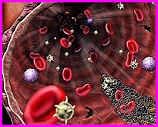 In this NGSS-aligned activity, high school students work as biomedical engineers to find liquid solutions that can clear away polyvinyl acetate polymer “blood clots” in model arteries made of clear, flexible tubing. Teams create samples of the “blood clot” polymer to discover the concentration of the model clot and then test a variety of liquids to determine which most effectively breaks it down. Students learn the importance of the testing phase in the engineering design process, because they are only given one chance to present the team’s solution and apply it to the model blood clot.
In this NGSS-aligned activity, high school students work as biomedical engineers to find liquid solutions that can clear away polyvinyl acetate polymer “blood clots” in model arteries made of clear, flexible tubing. Teams create samples of the “blood clot” polymer to discover the concentration of the model clot and then test a variety of liquids to determine which most effectively breaks it down. Students learn the importance of the testing phase in the engineering design process, because they are only given one chance to present the team’s solution and apply it to the model blood clot.
Read More
Filed under: Class Activities, Grades 9-12, Lesson Plans | Comments Off on Let the Blood Flow: Biomedical Artery Unclogging Experiment
Tags: arteries, Biomedical Engineering, Chemistry, circulatory system, Class Activities, Grades 9-12, heart, Lesson Plan, NGSS, stent, TeachEngineeirng, UCLA SEEK GK-12 program, valves
Posted on January 9th, 2019 by Mary Lord
 Middle school students address misconceptions and learn about thermal energy transfer while investigating the insulating properties of various materials. They then follow the engineering design process to create, test, and redesign a structure (igloo) to keep an ice cube (penguin) from melting.
Middle school students address misconceptions and learn about thermal energy transfer while investigating the insulating properties of various materials. They then follow the engineering design process to create, test, and redesign a structure (igloo) to keep an ice cube (penguin) from melting.
Read More
Filed under: Class Activities, Grades 6-8, Grades 9-12, Lesson Plans | Comments Off on Save the Penguins
Tags: arctic engineering, Class Activities, Curriculum, Energy, Environmental Engineering, Grades 6-8, Grades 9-12, habitat, heat transfer misconceptions, ice, insulation, Lesson Plan, NGSS aligned, Physics, polar ice, Save the Penguins
Posted on January 3rd, 2019 by Mary Lord
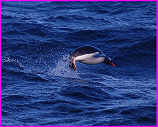 Middle and high school students learn about the importance of the polar regions by connecting with scientists and the data generated by their cutting-edge research on penguins and ocean environments.
Middle and high school students learn about the importance of the polar regions by connecting with scientists and the data generated by their cutting-edge research on penguins and ocean environments.
Read More
Filed under: Class Activities, Grades 6-8, Grades 9-12, Web Resources | Comments Off on Polar Ice
Tags: Class Activities, Climate Change, Environmental Engineering, Grades 6-8, Grades 9-12, Lesson Plan, Liesl Hotaling, Marine Science, NSTA, oceanography, penguins, polar ice, polar research, Resources for Teachers
Posted on December 16th, 2018 by Mary Lord
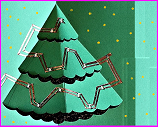 Students in grades 6 to 12 learn simple circuitry by creating light-up paper cards using only copper tape, a coin cell battery, a light-emitting diode (LED), and small electronic components. An artistic way to teach the basics of how circuits function—no soldering required!
Students in grades 6 to 12 learn simple circuitry by creating light-up paper cards using only copper tape, a coin cell battery, a light-emitting diode (LED), and small electronic components. An artistic way to teach the basics of how circuits function—no soldering required!
Read More
Filed under: Class Activities, Grades 6-8, Grades 9-12, Lesson Plans | Comments Off on Paper Circuits Greeting Cards
Tags: Class Activities, electricity, Grades 6-8, Grades 9-12, LEDs, Lesson Plan, NGSS, paper circuits greeting cards, Physics, STEAM, Technology
 Civil, chemical, and environmental engineers work together to develop new water treatment systems or to improve existing ones. In this activity, teams of students in grades 3-5 investigate different methods for removing pollutants from water, then design and build their own water filters from plastic bottles.
Civil, chemical, and environmental engineers work together to develop new water treatment systems or to improve existing ones. In this activity, teams of students in grades 3-5 investigate different methods for removing pollutants from water, then design and build their own water filters from plastic bottles.








 Middle school students explore how fertilizers and other solids affect water quality by building and using sensors to measure the electrical conductivity of water samples. They then create data tables and investigate possible sources of pollutants using digital visualization tools.
Middle school students explore how fertilizers and other solids affect water quality by building and using sensors to measure the electrical conductivity of water samples. They then create data tables and investigate possible sources of pollutants using digital visualization tools. The work of engineers is all around us, but many students don’t know about the exciting careers they could pursue by studying engineering. That’s particularly true for girls and students of color.
The work of engineers is all around us, but many students don’t know about the exciting careers they could pursue by studying engineering. That’s particularly true for girls and students of color.  Students in grades 3 to 5 learn about their heart rate and different ways it can be measured by constructing and using a simple device to measure their heart rate under different circumstances, such as sitting, standing, and jumping. They make predictions and record data on a worksheet.
Students in grades 3 to 5 learn about their heart rate and different ways it can be measured by constructing and using a simple device to measure their heart rate under different circumstances, such as sitting, standing, and jumping. They make predictions and record data on a worksheet. In this activity, teams of students in grades 6 to 8 will learn about the engineering design process and how a one-way valve works by creating heart valves from tape, plastic tubing, and other materials.
In this activity, teams of students in grades 6 to 8 will learn about the engineering design process and how a one-way valve works by creating heart valves from tape, plastic tubing, and other materials.  In this NGSS-aligned activity, high school students work as biomedical engineers to find liquid solutions that can clear away polyvinyl acetate polymer “blood clots” in model arteries made of clear, flexible tubing. Teams create samples of the “blood clot” polymer to discover the concentration of the model clot and then test a variety of liquids to determine which most effectively breaks it down. Students learn the importance of the testing phase in the engineering design process, because they are only given one chance to present the team’s solution and apply it to the model blood clot.
In this NGSS-aligned activity, high school students work as biomedical engineers to find liquid solutions that can clear away polyvinyl acetate polymer “blood clots” in model arteries made of clear, flexible tubing. Teams create samples of the “blood clot” polymer to discover the concentration of the model clot and then test a variety of liquids to determine which most effectively breaks it down. Students learn the importance of the testing phase in the engineering design process, because they are only given one chance to present the team’s solution and apply it to the model blood clot. Middle school students address misconceptions and learn about thermal energy transfer while investigating the insulating properties of various materials. They then follow the engineering design process to create, test, and redesign a structure (igloo) to keep an ice cube (penguin) from melting.
Middle school students address misconceptions and learn about thermal energy transfer while investigating the insulating properties of various materials. They then follow the engineering design process to create, test, and redesign a structure (igloo) to keep an ice cube (penguin) from melting.  Middle and high school students learn about the importance of the polar regions by connecting with scientists and the data generated by their cutting-edge research on penguins and ocean environments.
Middle and high school students learn about the importance of the polar regions by connecting with scientists and the data generated by their cutting-edge research on penguins and ocean environments. Students in grades 6 to 12 learn simple circuitry by creating light-up paper cards using only copper tape, a coin cell battery, a light-emitting diode (LED), and small electronic components. An artistic way to teach the basics of how circuits function—no soldering required!
Students in grades 6 to 12 learn simple circuitry by creating light-up paper cards using only copper tape, a coin cell battery, a light-emitting diode (LED), and small electronic components. An artistic way to teach the basics of how circuits function—no soldering required!